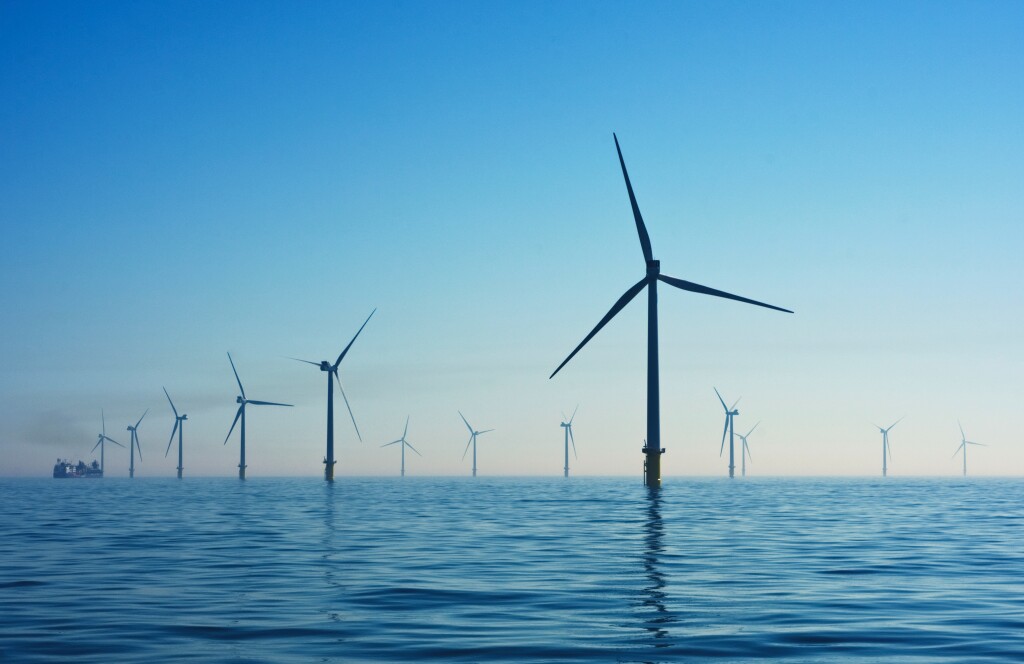It can be difficult to follow all of the nascent industries out there that might require the services of your average 3D reality capture professional. As everyone continues to wake up to the benefits of reality capture, it seems like people discover a new use for the technology every day. That leaves professionals the task of coming up with a business case, marketing plan, workflow process, and everything else approaching a new business sector requires, all with no guarantee the actual revenue will flow.
So often, it’s a leap of faith.
Sometimes, though, new industries represent a better bet than others. And right now, there can be few nascent industries that are a better bet than offshore wind, which is about to expand incredibly rapidly. While it has been slow going for developers, especially as the Trump administration essentially halted all wind progress whatsoever, the Biden administration is now all-systems-go and the Eastern Seaboard will soon be a hive of offshore-wind construction activity.
News of Vineyard Wind’s approval for its first-in-the-nation commercial-scale offshore wind farm in May has set the industry abuzz. As many as 20 similar projects sit ready for similar approvals. Most observers believe once the bottle has been unstoppered we’ll see a quick series of approvals to follow. Already some $5 billion in U.S. investment, and $300 billion in global investment, has been poured into offshore wind. And that’s just the beginning.
Time for laser scanning, lidar, and reality capture professionals in general to tap in.
Fugro’s definitely not sitting around twiddling their thumbs. With an extensive sea-floor mapping business and a fleet of survey vessels, they’re already tapped into the offshore industry, in general, as part of site planning and investigation, and this month they announced support for a Vietnamese wind farm where they’ll map the wind itself. Their Seawatch platform is already used for any number of sensing tasks, and they’ve lately added wind profiling to the mix, using ZX 200M lidar to record wind measurements up to 300 meters above sea level and provide monthly reports that validate the wind potential of the planned wind farm.
As this piece in Windpower by Leosphere lays out, lidar’s ability to monitor and assess wind promises to be hugely valuable. By optimizing the placement of the wind towers and turbines, developers stand to increase generation by so much that the cost of lidar on the front end may amount to peanuts in comparison.
Whether it’s a floating lidar platform or a nacelle-mounted lidar system (“nacelle” is the housing for the wind turbine - just learned that term), or a system that combines both solutions, there is rich data to be gathered and processed in order to optimize wind farm layouts and performance.
But these wind farms are also just massive construction sites, which will be staffed by a crew on a vessel in the middle of the ocean, performing incredibly complex operations. There’s also a ton of opportunity in typical handheld and terrestrial laser scanning. Those organizations that can operate in harsh conditions, with salt air and the motion of the ocean, may find a great deal of interest from developers who need real-time information of a 3D nature that can be sent back to shore for examination by project leads and technical project managers.
Further, if there’s a better use case for digital twinning than a wind farm, I’m not sure what it is. From figuring out maintenance schedules to training new employees, having a digital replica of a wind farm ought to offer huge operational advantages to operators. It will be up to the 3D industry to figure out how a mix of UAVs and submersibles can capture the data and recreate the environment without a great deal of opportunity for setting control and establishing accuracy.
The wind space is ripe for innovation, in general, but offshore wind is going to offer an especially pointed opportunity, given how new it is in the American marketplace and how covetous the U.S. market is of even a little bit of margin. If you can show developers how they can create efficiency with 3D reality capture, you’ll find yourself with a healthy revenue stream.
Cover photo by Nicholas Doherty on Unsplash






